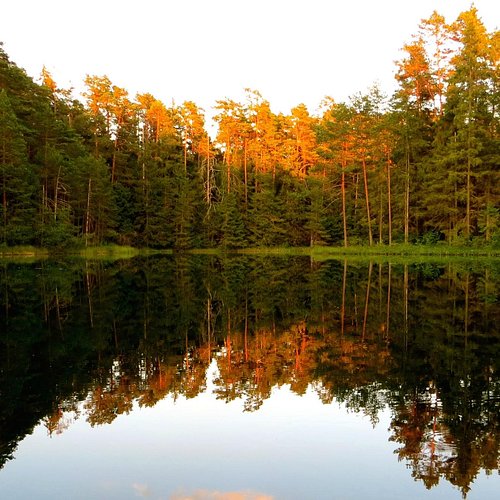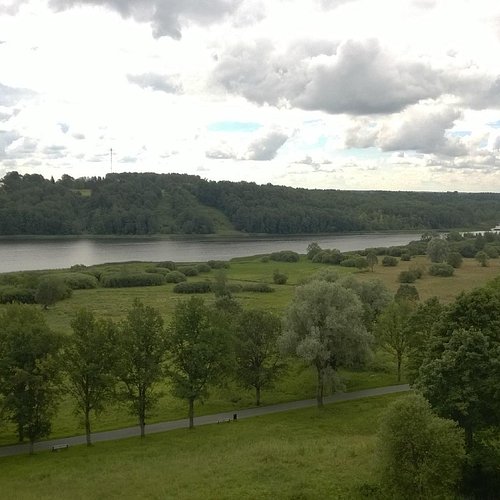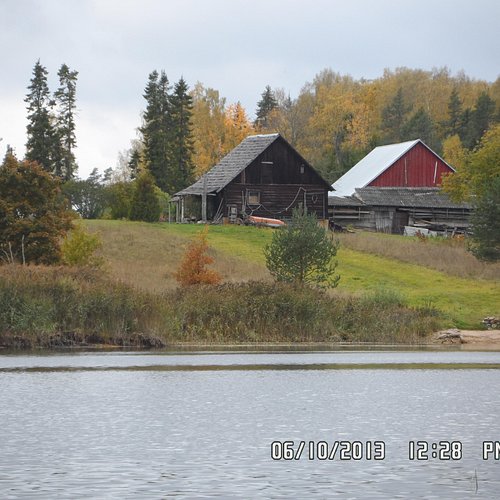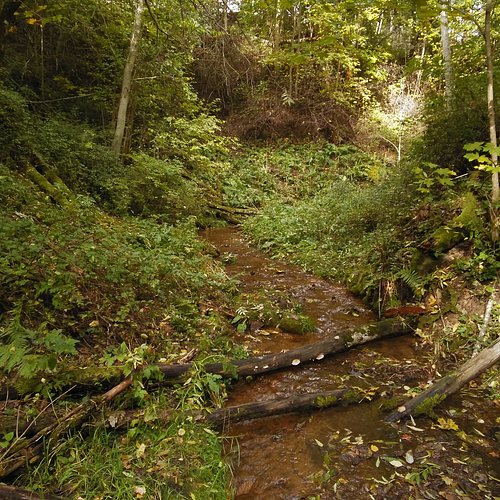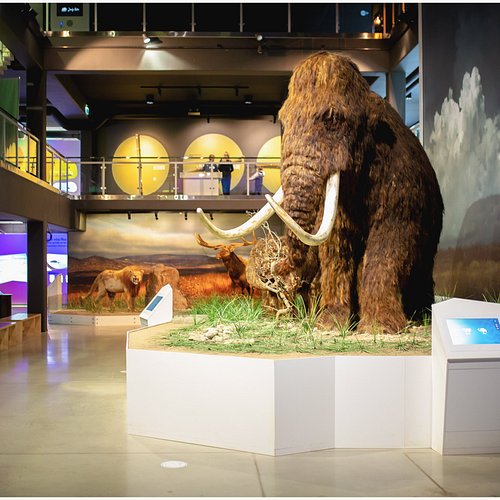The 10 Best Bodies of Water in Estonia, Estonia
– in Europe (green & grey)
– in the European Union (green) – [Legend]
Restaurants in Estonia
1. Lake Puhajarv
Overall Ratings
5.0 based on 48 reviews
The picturesque coastline and five islands of Lake Puhajarv make it the biggest and most beautiful lake in the Otepaa region. There is a beach with a beach house, ball game courts, rest areas, cafés and a pier by the northern tip of Lake Puhajarv.There are many springs in the lake and the Spring of Love is the most famous of these. The Vaike Emajogi River starts from the southern tip of the lake. A 12 km hiking track runs about the lake.Dalai Lama Tenzin Gyatso blessed the lake in 1991 and this event is commemorated with a wooden sculpture on the lake’s shore by the park.
2. Nohipalu Black Lake
Overall Ratings
5.0 based on 1 reviews
Nohipalu Black Lake is located 0,5 km to the south of the White Lake and is larger and a complete opposite to its neighbour. The banks of this forest lake are low, boggy and, especially in the south, difficult to move along. Its waters are acidic, reddish-brown, extremely opaque (transparency is only 0,4 m), and rich in organic elements. Hikers can rest on the banks near a fire or make a picnic in a specially equipped roofed place.
3. Nohipalu White Lake
Overall Ratings
5.0 based on 2 reviews
Nohipalu White Lake is located on a forest-covered sandur in the north-east of the Haanja Upland.The banks are mostly sandy and not much bogged. The lake is surrounded by a coniferous forest dominated by pine trees. According to the existing data, the White Lake is the most oligotrophic (poor in nutrients) and transparent lake in Estonia. Holidaymakers like to enjoy themselves near a cozy fire on its banks.
4. Spring Siniallikas
Overall Ratings
5.0 based on 1 reviews
Siniallkas (“Bluespring”) was an ancient sacrificial spring, named after its crystal clear water and its peculiar blue colour, which is due to the blue clay settled at the bottom of it.Interesting to know:A legend tells of a blue-eyed maiden who was teased by the lord of the manor. Out of distress, she drowned herself in the spring.The spring is said to reveal a treasure if seven brothers drank from it together.The water of the spring was believed to have a healing power. Silver coins were thrown into it as a sacrifice. Nearby is a hill fort, where ancient Estonians built a stronghold in the 12th-13th century, and Lake Sinialliku.
5. Antu Lakes
Overall Ratings
5.0 based on 2 reviews
The largest Antu lakes are Valgejarv (White Lake), Roheline (Green) or Vahejarv (Middle Lake) and Sinijarv (Blue Lake). The latter two are unique due to their singular bluish-green colour and transparency. The bottom of the lakes is covered with light lake lime which together with the surrounding nature gives the water its beautiful colour. Somewhere in a distance are other Antu lakes: Linaleo, Maetaguse, Kaanjarv ja Umbjarv which are small forest lakes with unstable banks surrounded by the boggy landscape containing a number of hiking trails.
6. Karujarv
Overall Ratings
5.0 based on 1 reviews
The bottom of the lake is mainly sandy. In Karujarv there are five islands. According to the folktale Karujarv got its name after 7 bears quarrelled on this place. To stop the God made such a heavy rain that the lake was created. Bears went away each one of them in his own direction, that why the lake has 7 gulfs.Interesting to know:Karujarv is the oldest lake on Saaremaa, almost 8000 years old.Lake is under nature protection.The area of the lake is 330 ha and the deepest place is 6 m.
7. Lake Viljandi
Overall Ratings
4.5 based on 34 reviews
Lake Viljandi is in a primeval valley, which is 11 m deep, 450 m wide and 4600 metres long. The lake is well-known in Estonia thanks to the song about the boatman of VIljandi, who day-dreams about the beautiful blue eyes of a girl he once saw when he was young. The trail that goes around the lake will take hikers to the observation platform on the other shore where you will see a charming and unique silhouette of the town.
Reviewed By Globetrotter045 - Haacht, Belgium
The stairs down from the Town Hall will bring you to the lake in 5 minutes. Ofcourse it will take you a bit longer to get up the hill again :-) I found the lake shore a pleasant place for a hot summer afternoon. You can go for a swim, rent a boat or just relax on the small beach. There are changing cabins, a play area for the kids and a café.
8. Lake Porkuni
Overall Ratings
4.5 based on 3 reviews
Lake Porkuni covers 41.5 hectares. It is divided using barrages into four smaller lakes: Lake Suurjarv also known as the ‘upper lake’; Lake Karujarv, also known as the ‘lower lake’; Lake Aiajarv; and Lake Iiri or the ‘Irish lake’. What makes Porkuni famous is the floating islands of Lake Suurjarv,which has a diving tower and where you can hire boats. It is also home to the Kaie spring. Folk tales talk of a slave girl named Kaie whose beauty caught the eye of the lord of the manor. But his love for the girl was not reciprocated, and it is said that one day while Kaie was gathering hay by the lake he threw her into the water. Unable to swim, she drowned, and the hay in her apron is said to have formed the lake’s floating islands.
9. Lake Suurjarv
Overall Ratings
4.5 based on 3 reviews
Lake Suurjarv - Big Lake, or as the locals call it 'Witch's Lake' - forms part of the chain of lakes in Rouge valley. Suurjarv formed at the end of the last ice age from the action of melting ice. It is 13.5 hectares in area with an average depth of 11.9 metres. It is not a closed system, with creeks flowing into it from Lakes Liinjarv, Valgjarv and Kaussjarv. It is the deepest lake in Estonia (38 metres) and has many natural springs along its shores and in its depths. The colour of its water varies from orange to light green. 22 species of plants are found in the lake, to a depth of up to 8 metres. The fish most commonly found in the lake are the perch and roach. The lake is open to swimmers.
Reviewed By zerblat - Tallinn, Estonia
The deepest lake in Estonia is in Rõuge, called Rõuge Suurjärv. The depth of the lake is 39 meters and it is a pleasant swimming place
10. Ice Age Centre
Overall Ratings
4.5 based on 40 reviews
Ice Age Centre is an exciting theme park meant for the whole family! We offer the joy of discovery for visitors of all ages! We are a unique visiting centre in the Baltic States – you will see life-sized prehistoric animals and experience how the world and Estonian nature has developed through the ages. Is mammoth just a hairy elephant? When did humans inhabit Estonia? How will the coastline change in time? Is the climate getting warmer or actually colder? From us you will get to know how the Universe was formed and what lies ahead in the future! Ice Age Centre exhibition offers an overview of the origins of ice ages and their effect on the Earth, Estonia and Vooremaa, introduces the development of Estonian nature and human settlement after the last ice age and the causes of and research on climate change. We are located in the heart of Vooremaa, next to beautiful lake Saadjärv – an area known for the ice age and Estonian Kalevipoeg legends.



